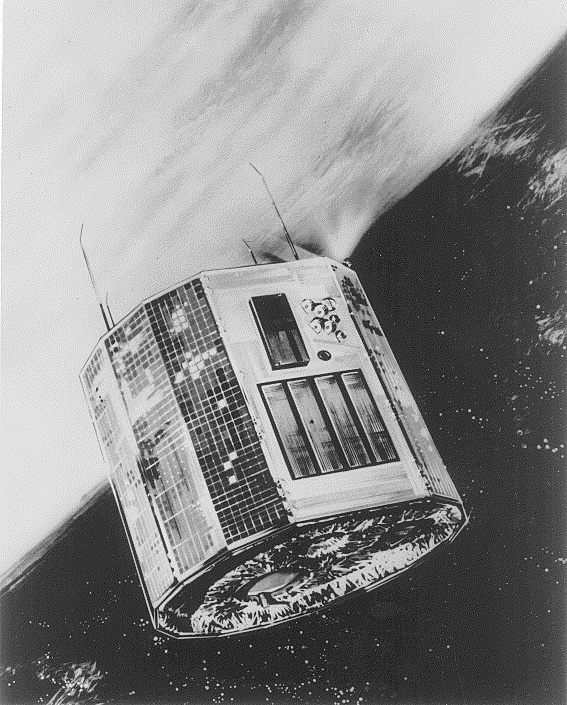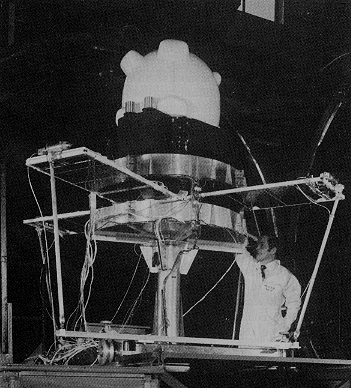Ariel Program

An artist's conception of the Ariel 5 spacecraft in orbit. (Credit: NASA)

The Ariel 6 satellite prior to launch. (Credit: NASA)
The Ariel Program was a British research program. There were six satellites launched between the 1960s and 1980s. The program had a broad range of studies including studying the sun, radio waves from the galaxy, and terrestrial thunderstorms. Ariel 5 and 6 each carried instruments for high-energy astronomy.
Lifetime: April 1962 (launch of Ariel 1) - February 1982 (end of data from Ariel 6)
Country (primary): United Kingdom
Ariel 5
Lifetime: October 1974 - March 1980
Primary Science
Ariel 5 was primarily focused on improving the accuracy of position measurements of X-ray stars and measuring their energy spectra.
Science Highlights
- Long-term monitoring of many X-ray sources
- Discovery of several long-period X-ray pulsars (with periods of minutes)
- Establishing Seyfert 1 galaxies (a type of active galactic nucleus) as class of X-ray emitters
- Discovery of iron line emission from extragalactic sources
Links to more information
Ariel 6
Lifetime: June 1979 - February 1982
Primary Science
Ariel 6 carried three experiments: one cosmic ray experiment and two X-ray detectors. Unfortunately, due to interference from ground-based radar, the science output of the experiments was severely limited.


